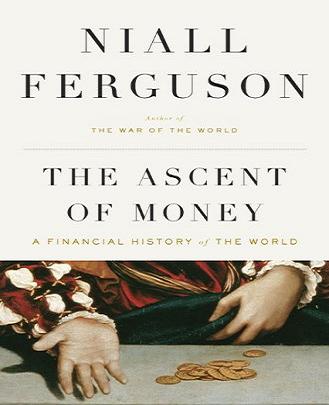There are a lot of sellers in this city that are still pricing their properties like it’s September, 2007.
The market has changed, and even though properties are still being bought and sold every day, some sellers are just stubborn.
I recently read something in the book “The Ascent of Money” that may shed some light on why…

First let me say that of all the books I’ve read in the past year, I learned the most from The Ascent of Money.
The Ascent of Money traces the evolution of money and demonstrates that financial history is the essential back-story behind it all. The invention and subsequent evolution of currency, bonds, the publicly traded corporation, real estate, and all other financial vehicles are detailed by author, Niall Ferguson.
This is a “must read” for everybody, regardless of their occupation or interests, but I’ll leave that up to you…
I have a seller of a condominium in North Toronto who refuses to see the light at the end of the tunnel. I listed his property in November of 2008, and after 100+ days, the property still sits on the market.
Forgive the rather cliche, “light & tunnel” analogy, but I think it’s pretty accurate in his case.
The sale of his condo has been a long, complicated, and unnecessarily drawn-out process, but there is a glimmer of hope.
We chased the sale of a similar unit which had sold at $285,000, and thus we priced ours at $284,900. While I urged the owner to consider that the market had changed and December was going to be a very slow month, he refused to “lose” money on his condo since he figured he was somehow owed the exact same amount as the owner directly one floor above.
Real estate has no fixed value, and although we work with past sales to assess an approximate value for a particular property, there is actually no such “true value” for a property until the very second that it is sold.
This seller of mine determined that anything less than the $285,000 that his neighbor received would be “lost money,” and he refused to budge.
Fast forward to February of 2009, and after two price reductions and 115 days on the market, we are priced at $271,900 with no offers.
Had the owner taken my advice and priced at $271,900 back in October, we might have had a sale. But as they say, “We’ll never know.”
From his perspective, he has already “lost” $13,000 on his property since he figures he was owed the aforementioned $285,000.
But what is lost or gained really depends on the view of the individual him/herself.
This brings me back to The Ascent of Money, and an excerpt from the book.
Have a read:
“This brings us to the second reason for the inherent instability of the financial system: human behaviour.
As we have seen, all financial institutions are at the mercy of our innate inclination to veer from euphoria to despondancy; our recurrent inability protect ourselves against ‘tail risk;’ our perennial failure to learn from history.
In a famous article, Daniel Kahneman and Amos Tversky demonstrated with a series of experiments the tendency that people have to miscalculate probabilities when confronted with simple financial choices.
First, they gave their sample group 1,000 Israeli pounds each.
Then they offered hem a choice between either:
a) a 50% chance of winning an additional 1,000 Israeli pounds
b) a 100% chance of winning an additional 500 Israeli pounds
Only 16% of people chose “a.” Everyone else (84%) chose “b.”
Next, they asked the same group to imagine having received 2,000 Israeli pounds each and confronted them with another choice:
c) a 50% chance of losing 1,000 Israeli pounds
d) a 100% chance of losing 500 Israeli pounds
This time the majority (69%) chose “c.” Only 31% chose “d.”
Yet, viewed in terms of their payoffs, the two problems are identical.
In both cases you have:
-a choice between a 50% chance of ending up with 1,000 Israeli pounds and a 50% chance of ending up with 2,000 Israeli pounds (a & c)
-a certainty of ending up with 1,500 Israeli pounds (b & d).
In this and other experiments, Kahneman and Tversky identify a striking asymmetry: risk aversion for positive prospects, but risk seeking for negative ones.
A loss has about two and a half times the impact of a gain of the same magnitude.”
Interesting stuff, wouldn’t you agree?
This part needs to be read twice: Risk aversion for positive prospects, but risk seeking for negative ones.
I think that all sellers of real estate in Toronto at the moment have to simply play the hand that they’ve been dealt. Maybe it’s not “exciting” to sell your property for $300,000 when you coulda/woulda/should received $320,000 twelve months ago, but these losses & gains never really existed anywhere but inside the seller’s mind.
While I slept through almost all of my first-year Pychology courses at McMaster in the 1990’s, I’m still intrigued by human behaviour when it comes to the financial markets and real estate.
If I might make a book recommendation, Investment Psychology Explained by legendary Martin J. Pring is worth a read as it deals with emotional and psychological impediments that distort decision making in the world of personal finance.






























